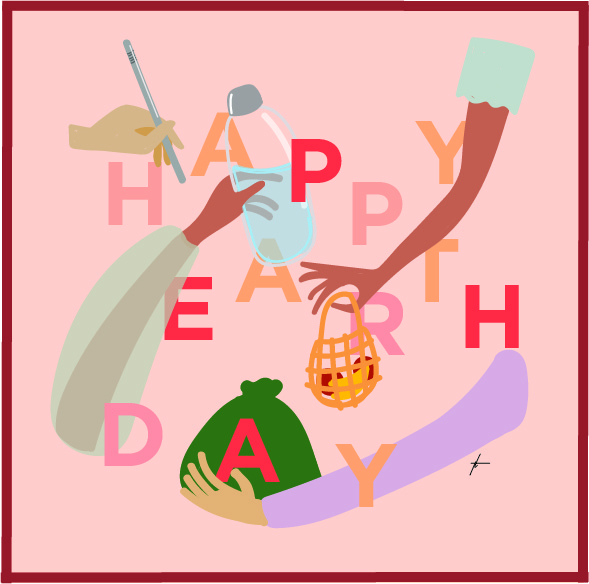(This story was originally published in print on Apr. 25, 2019).
Growing up near California’s Sierra Nevada mountains, my family and I would often venture into the Sierras on camping trips during the summer. After much preparation and packing, we drove along Highway-108, with windows rolled down to smell the rustic scent of bear clover, until we finally arrived at a camping site far from anyone. We would spend a few days resting in the abode of sugar pine trees—river water trickling past our tent and listening to the songs of crickets.
After camping for a few days, we would pack our things and take one last look at the nature that surrounded us. While we prepared to leave, my dad always reminded me, “Make sure you leave this place like you found it.” These words have always resonated with me. When we invite ourselves into nature, it is important to respect and steward God’s creation.
Unfortunately, we have not left the earth like we found it. People have stripped the earth of resources through overconsumption and wastefulness, emitting carbon dioxide through burning oil and gas, and deforestation. However, on April 22, people worldwide take one day out of the year to celebrate Earth Day, admiring creation, demonstrating support for environmental protection and raising awareness about pollution. With the impact that humans have on the environment, people should consider how their actions impact the environment every day, not just on April 22.
ENVIRONMENTAL DEGRADATION
The impacts of overconsumption, overproduction and squandering our resources is environmental degradation. Environmental degradation is the deterioration of the earth through the consumption of resources—such as air, water and plants—as well as the destruction of nature and wildlife.
Population growth increases the need to provide food and water. According to the World Wide Fund for Nature, “It takes a year and a half to generate the resources that the human population uses in only a year” and it would take “1.6 Earths to produce all the renewable resources we use.” Despite a higher demand for resources, people often squander food and water—causing people to use resources faster than the earth can produce them.
In addition to a higher demand for resources and overconsumption, environments have been destroyed because of air pollution caused by humans emitting carbon, sulfur and nitrogen oxides, however serious pollutants include burning fossil fuel such as coal, oil and natural gas, according to the National Center for Atmospheric Research. The emissions from these pollutants can lead to unnatural impacts on the environment such as smog and acid rain, which can injure people, plants and animals, according to the NCAR.
With an excess of carbon, people rely on forests to mitigate the negative effects of carbon emission, because trees absorb carbon through photosynthesis. However, according to the Rainforest Action Network, 3.5 to 7 billion trees are cut down every year, as 15% of these trees are cut down for the expansion of homes and cities, as well as the construction of roads. That is 525 million to 1.05 billion trees. While logging is helpful to keeping forests from overpopulating, it is crucial to protect healthy forests from destruction because of expansion, as forests provide clean air and habitats for wildlife.
SUSTAINABILITY
These problems cannot be mitigated by simply thinking about nature on Earth Day. These problems necessitate conscious thought about how actions impact not only the environment, but also future generations. As stewards of God’s creation, it is important to discourage the exploitation of resources and encourage sustainability.
According to the United Nations World Commission on Environment and Development, sustainability is the ability to meet the needs of the present without compromising the ability of future generations to meet their needs. Many organizations are seeking to mitigate the issues of environmental degradation and encourage sustainability.
The National Institute of Food and Agriculture, a branch within the United States Department of Agriculture, seeks to create awareness with farmers and ranchers about sustainable farming practices that are profitable and environmentally sound. By encouraging these practices, this organization helps create a more sustainable future through reducing waste of products.
Many organizations have sought to reverse the impacts of deforestation, such as the National Forest Foundation which seeks to improve watershed health, wildlife habitats and air quality through planting trees and healthy logging. By planting trees and removing dead trees through logging, the foundation helps to mitigate the issue of deforestation by implementing practices that help forests thrive, creating a healthier future.
WHAT WE CAN DO
While these organizations are seeking to eliminate major issues of environmental degradation, there are some practical things that we can do to help create a more sustainable future. Making conscious decisions every day to extend Earth’s resources, people can do things as simple as using reusable bags at the grocery store or drinking out of reusable water bottles to reduce the production of plastic and displacement of waste.
While it may seem that these small acts make little difference, choosing to use products that have a longer life span and less of an impact on pollution allows for a more sustainable environment. This calls for considering the impact that we have on the environment every day, not just on Earth Day.
















